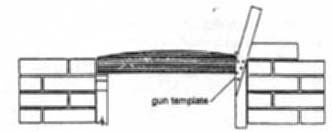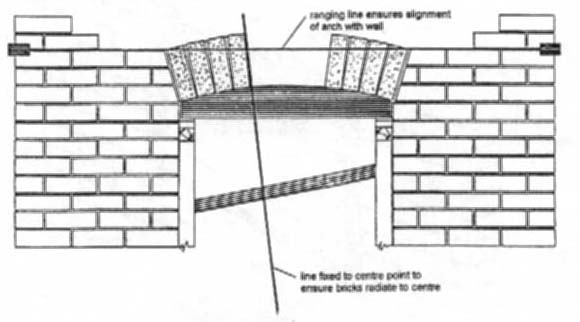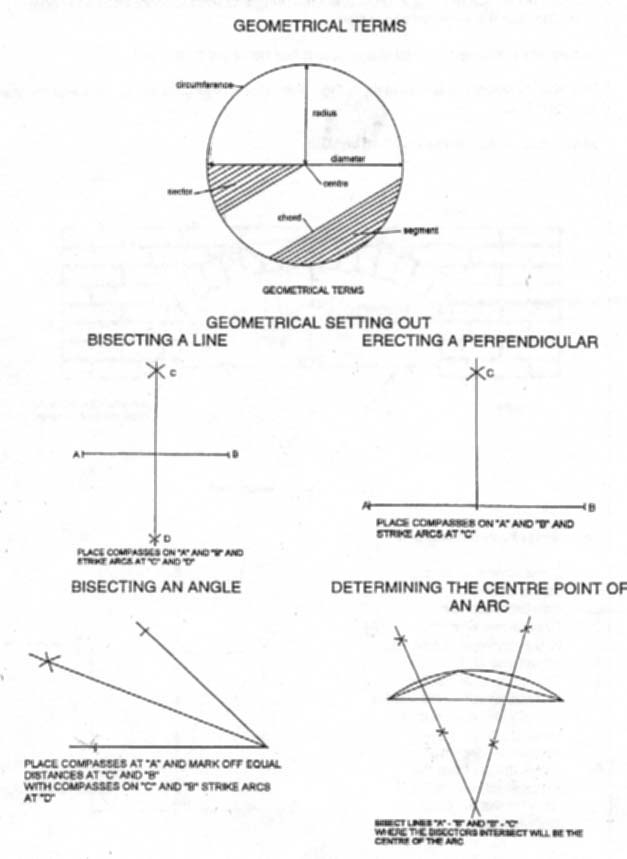 A good understanding of basic geometrical setting out and terms in relation to the circle are essential if you are to fully understand the construction of an arch.
A good understanding of basic geometrical setting out and terms in relation to the circle are essential if you are to fully understand the construction of an arch.INFORMATION SHEET
PROJECT TITLE Project No; 26
Segmental Arch CORE
1 of 4
Geometry and Setting Out for Arch Construction
 A good understanding of basic geometrical setting out and terms in relation to the circle are essential if you are to fully understand the construction of an arch.
A good understanding of basic geometrical setting out and terms in relation to the circle are essential if you are to fully understand the construction of an arch.
Arch Construction – Segmental Arch
One of the simplest ways of bridging openings is by way of an arch.
The curved shape of an arch distributes the weight of the masonry above an opening down through the walls on either side.
Arches are classified by their shape and the makeup of the face bond.
This sheet covers the terms used in the construction of segmental arches and the method of setting out.
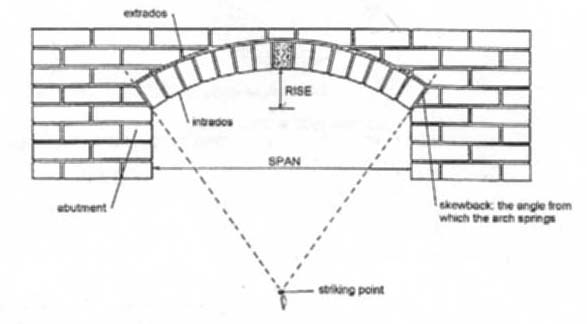 Segmental Arch Terms and Setting Out
Segmental Arch Terms and Setting Out
Segmental Arch Setting Out
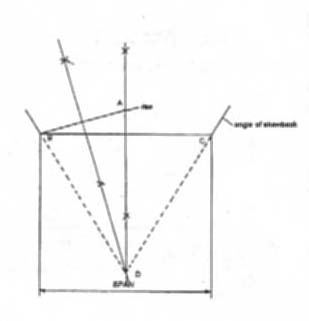
Arch Construction – Temporary Timber Support
On completion an arch will carry itself and any loads imposed upon it. But during its construction a timber support is needed.
For segmental Arches it is common practices for turning pieces to be used.
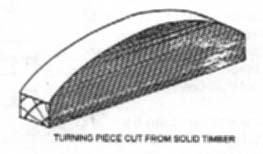
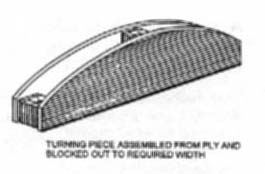 The can be cut from solid timber or made from ply wood and a timber frame.
The can be cut from solid timber or made from ply wood and a timber frame.
The turning piece is supported in position by timber props and bearers. Folding wedges are used to assist in the removal of temporary timbering once the arch is constructed.
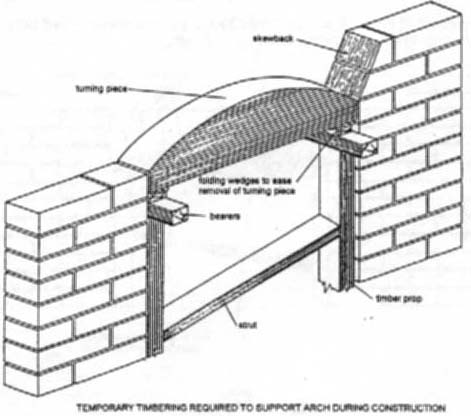
Sequence of Building a Rough Segmental Arch
Once the turning is positioned the skew back can be set out.
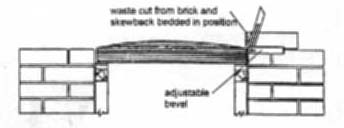 For rough arches the skewback can be established by cutting angle from brick placed squarely on the turning piece.
For rough arches the skewback can be established by cutting angle from brick placed squarely on the turning piece.
